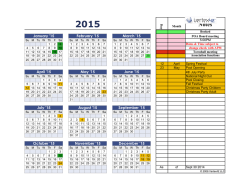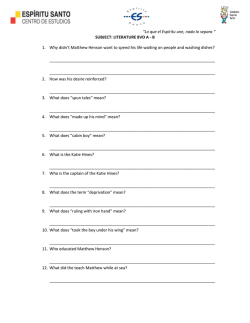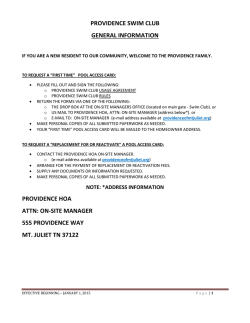
Free Shipping » Viagra Tho Dengudu
"The Ball's In Your Court" As first graders, Scott and my son Matthew became good friends. Occasionally Scott’s mom met us at a park so the boys could play. When it was time to leave, Scott always cried. He ran the opposite direction of his mother. He yelled, “NO!” Scott’s mom usually rewarded this behavior by promising ice cream on the way home. The day Scott came to our house to play, the boys had a wonderful time. Scott behaved himself beautifully. After about four hours, his mother called to say she was on her way to pick him up. Before she arrived, I pulled Scott aside for a short chat. I told him that the way he left my house that day would determine whether or not he would ever come back to play. That’s all. When mom arrived to get Scott, I watched her literally brace herself for a hassle. She cooed, “Okay, Scott, honey. It’s time to go now, okay? Let’s get our shoes now.” Scott mumbled, “Okay,” put his shoes on, and strolled to the car. I still remember his mother’s head whipping around, staring at her son all the way down the drive. I’m pretty sure she took his temperature when they got home. Why It Works Simplified, this tool says, “the way you handle this determines what happens next.” It’s a beautiful way to reduce power struggles, diffuse an escalating situation, and avert blow‐ups. Implement this tool with a number of behaviors. It de‐escalates some situations and prevents others from ever erupting. It works on small children, teens, and everyone in between. You can use it quietly…without becoming irritated or exasperated. You can even tag it on before or after another tool. Pre‐empt or calm down. Either way is fine. Your child clearly understands: Whether my life gets better or worse is contingent on what I do right now. Again, the responsibility for behaving falls squarely on the shoulders of the child. You remain calm, loving, and consistent. NoFuss Departures Leaving the pool, park, or friend’s house often sparks battles between parents and children. As I sit by the pool in our neighborhood, I can’t help but notice the number of parents held hostage by children who simply won’t get out. “The Ball’s in Your Court” tool is key in getting kids to go where you want, when you want. Combined with setting expectations, it’s like striking gold. Remember this simple formula: 1. Tell your child before heading to the pool/park/friend’s that how he responds when leaving determines if he will swim/play the next time. (Set the expectations.) 2. Paint a distinct picture for your child. “I will call you to come to the car. You will say, ‘Okay, Mom,’ and come to me immediately.” 3. Your child makes the choice. Remember not to micromanage by reminding, pulling, etc. The ball is in your child’s court at this point. He has to decide whether or not he will obey you. What you control are the ramifications of his choice. Get Out of the Pool Each time we drove to the pool when the children were younger, I reminded them that the way they got out determined whether or not they would swim the next time. One scorching June day a few summers ago, I called the kids to get out of the pool. Noelle complied in less than 30 seconds. Little Matthew, however, paddled the other way. I said nothing. Noelle wrapped up in her towel while I continued to stand on the deck. Matthew glanced my way. I did not react. I just stood. He splashed a little, nervously looking over his shoulder. After a few minutes he got out of the pool and wrapped up in his towel. I didn’t utter a word about his behavior. The next day we put on our swim suits to go to the pool. “Oh, wait a minute,” I said. “I just remembered something. Matthew—do you recall how long it took you to get out of the pool yesterday?” He did not. No problem. I replayed the scene briefly for him. I told Matthew that since he did not obey immediately when called to get out, he could not swim that afternoon. I instructed him to put his clothes back on. Slightly concerned that this situation might deteriorate into a poolside scene, I added, “And the way you sit out today will determine whether or not you swim tomorrow.” (There’s the tool again!) Matthew sat by the edge of the pool on a chair while Noelle swam. He cried softly because he couldn’t help it. I was fine with quiet tears. Sometimes kids can’t hold them back. They just don’t need to accompany the tears with a fit. Noelle swam a long time, clearly thrilled to NOT be the one in trouble this time. The next day I set the usual expectations before heading to the pool. And when it was time to go home, both children calmly swam to the side and climbed out. Misusing the Tool? We’ll cover the concept of rewards later on in chapter 18, but we need to mention the danger of getting off track here. This tool must not be used in conjunction with rewards. In other words, the tool does not look like this: “Bryan, the way you handle yourself in the mall will determine if you’ll get a milkshake when we’re done.” Can you see the difference? If you’re dangling a carrot in front of your child hoping that he’ll want it badly enough to behave himself, you’ve misused the tool. And you’ve missed the point. When the alternative is unpleasant, children tend to make good choices. Never try to get your child to behave because there’s a pot of gold at the end of the behavior rainbow. Get Ready for Results In order to really help you grasp this tool, read through the following hypothetical situations and see how it is used. 1. Your son wants to go out with friends on a school night. You say no. As he begins to stomp off to his bedroom, you say, “How you act this very moment will have a huge impact on my decision the next time you ask to go somewhere.” 2. You and your daughter go shopping. She wants a new pair of shoes, but they’re too pricey for your budget. You tell her you won’t be buying them. When she clenches her fists and sputters, “I never get anything I want,” you respond: “How you handle this disappointment will determine how much I pay toward the next item you might like to have.” 3. Your son sits down at the computer to play a game. You tell him he has 20 minutes until bedtime. You add, “When I tell you it’s time to stop, I’ll be watching to see if you do. How quickly you get off the computer determines whether or not you’ll be on it tomorrow.” 4. Your daughter has been invited to a sleepover. You have to pick her up at 8:30 the following morning in order to make an appointment. As you drop her off, you say, “I’ll be in this driveway at 8:30 tomorrow. I want you to watch for me, come right out, and get in the car. Whether or not you do this determines if you’ll be sleeping over at the next party.” Are You Believable? The key to making this tool work lies in your ability to consistently follow through. If you act in accordance with your words 10 times and give up on the 11th, your child knows one thing: you don’t always mean what you say. He won’t believe you the next time. Follow through each and every time, however, and your child will believe that you intend to make good on whatever you said. Remember these six little words: “If you say it, do it.” Be careful of what you outline, too. I remember times when I spouted off something and then realized that I either couldn’t or didn’t want to carry through. Don’t do that. Think before you speak. Study Guide for Chapter 12 For Group Study or Personal Reflection Opening Discussion 1. Share a couple success stories from this past week concerning your children and discipline. 2. Explain what “The Ball’s in Your Court” means for your child. Exploring Further 1. The end of the chapter has 4 hypothetical situations. Which ones are pre‐emptive strikes? Which ones de‐escalate a situation? 2. Does this tool cross the line when it comes to manipulation? What’s the motive behind this tool? 3. Why does this tool hinge on how believable you are? Getting Practical 1. Why is it important not to use this tool with a reward at the end? (Think of the example with Bryan and the mall.) 2. Share a situation involving your children where you can use this tool to diffuse escalating behavior or pre‐empt unacceptable behavior. 3. What tools can you use in combination with this if needed? Taken from Parenting From the Heights www.ParentingFromTheHeights.com Copyright 2009; Heights Publishing
© Copyright 2024






